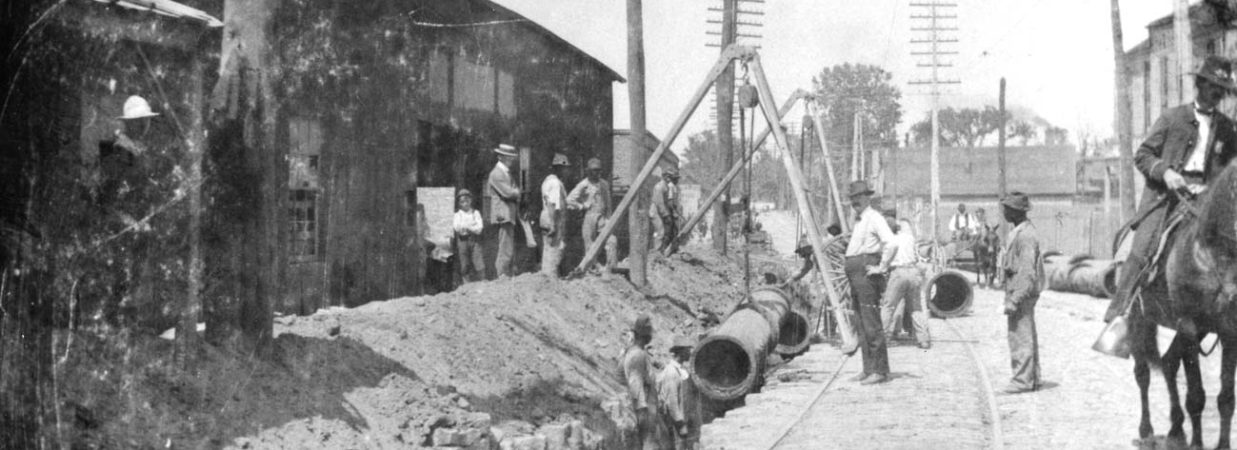History

The History of Clean Water Atlanta
Clean Water Atlanta Overview
In 1995, the United States Environmental Protection Agency (EPA), the Georgia Environmental Protection Division (EPD), the Upper Chattahoochee Riverkeeper and a citizen downstream filed a lawsuit against the City of Atlanta. This lawsuit alleged that the Combined Sewer Overflow (CSO) improvements were inadequate to comply with new federal and state water quality standards. The City negotiated with the lawsuit plaintiffs and the U.S. Department of Justice. As a result, in 1998 Mayor Bill Campbell signed a Federal Consent Decree. Atlanta received the first of two Consent Decrees from the EPA to address combined sewer overflows, which committed the city to an accelerated program of activities designed to improve water quality and eliminate water quality violations from CSOs by 2007. The City completed the first Consent Decree in 2008 in what was termed by the Federal judge a “remarkable accomplishment”.
In 1999, EPA issued a Second Consent Decree mandating the City of Atlanta address its aging sewer infrastructure. The Consent Decree was modified, adding projects that required the City to address water quality violations from Sanitary Sewer Overflows (SSOs), Water Reclamation Centers (WRCs) and pump stations by 2014. The City accelerated the ongoing sewer improvements, which included an intensive evaluation of sewer pipe conditions; rehabilitation or replacement of defected or capacity limited sewer lines; a grease management program; and a capacity certification program to address capacity availability with new development.
In 2002, after Mayor Shirley Franklin and the City of Atlanta adopted the name “Clean Water Atlanta” in order to focus program efforts on the goal of clean water and align Atlanta’s green infrastructure action plan and wet weather program strategies on sustainable solutions for a more resilient Atlanta.
These requirements were successfully met which improved water quality in Atlanta’s streams and creeks by reducing the number of CSOs. In 2012, U.S. District Judge Thomas Thrash granted the City of Atlanta a 13-year extension on its First Amended Consent Decree. This extension allows the Department of Watershed Management to exercise fiscal balance across all infrastructure types – water, wastewater and stormwater and to focus on meeting its SSO requirements.
The History of Clean Water Atlanta
The City of Atlanta and the surrounding region have grown tremendously in the last 100 years. As the region grows, the demands on existing infrastructure increases. Atlanta is faced with greater challenges in managing wastewater and stormwater, and protecting our rivers and streams. Clean Water Atlanta (CWA) is a comprehensive, coordinated initiative to improve the region’s water quality. CWA encompasses water and wastewater infrastructure and treatment system improvements that are mandated by Consent Decree, as well as watershed improvement projects that extend beyond the requirements.
Clean Water Atlanta represents an unprecedented investment in metro Atlanta’s water quality. Upon completion of all CWA tasks, the City will have invested more than $3 billion in Atlanta’s environment. Atlanta’s residents and ratepayers will boast of one of the best treatment and collection systems in the country.
History of Atlanta’s Sewer System
In its earliest days, Atlanta used open watercourses to capture stormwater and divert it into nearby brooks and creeks. As the City grew, and as sinks, bathtubs, and flush toilets became popular, stormwater sewers became conduits for carrying household wastewater as well. These drains were covered and transformed into combined sewers for the collection of stormwater and sewage. Combined sewers were a common method of sewage disposal in major cities. Since these systems were not designed to remove waste, and this combined waste was outfalling into the City’s streams, they eventually became a threat to public health.
In the late 1880s, sanitary sewers were built to collect wastewater generated by urban households. Once Atlanta outgrew this system, the design and construction of sewers were modernized, resulting in great improvement.
The improved sewer system was designed to carry both stormwater and household waste. This method had the advantage of providing dilution of the wastewater. However, as Atlanta continued its rapid growth, the system was overcome once again, unable to handle the load of the increase in household wastewater and stormwater runoff from increased paved surfaces.
Atlanta’s Wastewater Sewer System Today
The City of Atlanta’s Department of Watershed Management operates the wastewater collection, conveyance and treatment system, which consists of approximately 2,150 miles of sanitary and combined sewers, four Combined Sewer Overflow treatment plants; three Water Reclamation Centers; and 16 pump stations. The WRCs treat more 188 million gallons of wastewater per day. The City’s wastewater system serves more than 1.2 million people who commute to the city for work or who live outside the City in Dekalb, Fulton, and Clayton counties.
Atlanta’s sewer system dates back to the early 19th Century, and a large part of the original infrastructure remains. In the City’s core, in an area that is roughly 13 square miles, a combined sewer system conveys sewage and stormwater flows in a single pipe. Around 10% of the collection system is combined and the remaining 90% of the system consists of separate sanitary sewer piping. Excessive overflows from the combined sewer system, coupled with sanitary sewer overflows and leaks in the separated area, have negatively impacted water quality. In order to meet the requirements of the Federal Consent Decree, the City will make all necessary improvements to the wastewater system.
